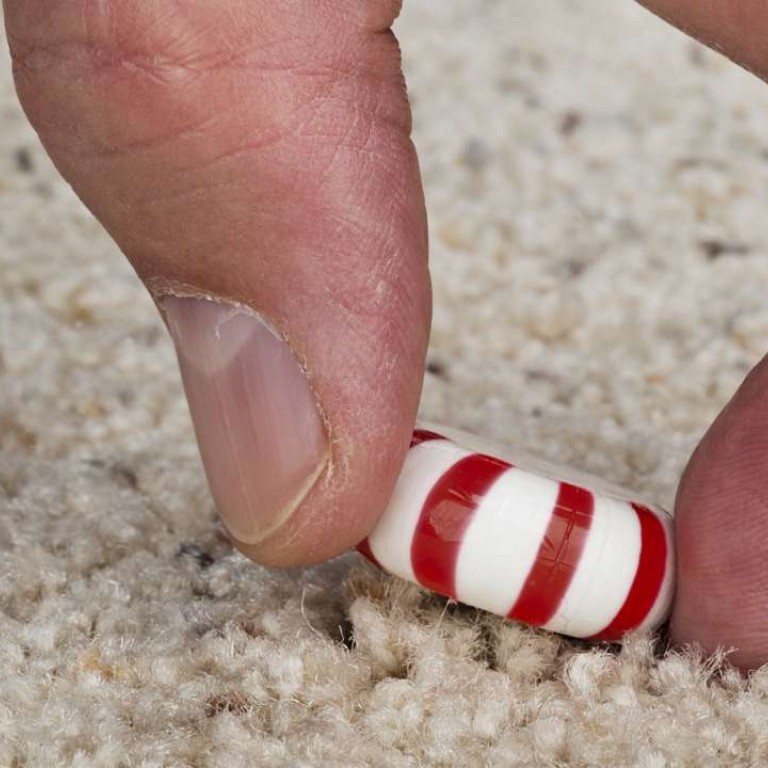
The five-second rule: why you can’t always use it for food dropped on floor
Watermelon that slips through your fingers shouldn’t be eaten, but spilt gummi bears fare a little better in new research on how quickly bacteria latch on to food that lands on the floor
Is it OK to eat food that has fallen on the floor – as long as you pick it up within five seconds?
The short answer: not true. Sometimes bacteria transfer from floor to food in less than a second.
The facts: We’ve all heard the “five-second rule” of food hygiene, which is probably as scientific as watching viral cat videos on Facebook. Well, a new study by researchers at Rutgers University has scientifically proven the rule wrong. It turns out bacteria may transfer to food that has fallen on the floor no matter how fast you pick it up.
Donald Schaffner, professor and extension specialist in food science, found that moisture, type of surface and contact time all contribute to cross-contamination. In some instances, the transfer begins in less than one second. The study appears online in the American Society for Microbiology’s journal, Applied and Environmental Microbiology.
“The popular notion of the ‘five-second rule’ is that food dropped on the floor, but picked up quickly, is safe to eat because bacteria need time to transfer,” Schaffner says, adding that while the pop culture “rule” has been featured by at least two TV programmes, research in peer-reviewed journals is limited.
“We decided to look into this because the practice is so widespread. The topic might appear ‘light’ but we wanted our results backed by solid science.”

The researchers tested four surfaces – stainless steel, ceramic tiles, wood and carpet – and four different foods (watermelon, bread, bread and butter and gummy candy). They also looked at four different contact times – less than one second, five, 30 and 300 seconds. They used two media – tryptic soy broth or peptone buffer – to grow Enterobacter aerogenes, a nonpathogenic “cousin” of Salmonella naturally occurring in the human digestive system.
Transfer scenarios were evaluated for each surface type, food type, contact time and bacterial prep; surfaces were inoculated with bacteria and allowed to completely dry before food samples were dropped and left for specified periods. All 128 scenarios were replicated 20 times each, yielding 2,560 measurements. Post-transfer surface and food samples were analysed for contamination.
Not surprisingly, watermelon had the most contamination, gummy candy the least. “Transfer of bacteria from surfaces to food appears to be affected most by moisture,” Schaffner says. “Bacteria don’t have legs, they move with the moisture, and the wetter the food, the higher the risk of transfer. Also, longer food contact times usually result in the transfer of more bacteria from each surface to food.”
Perhaps unexpectedly, carpet has very low transfer rates compared with tiles and stainless steel, whereas transfer from wood is more variable. “The topography of the surface and food seem to play an important role in bacterial transfer,” Schaffner says.

The Rutgers researchers are not the first to examine the five-second rule. In 2004, it was the topic of a study that was awarded an Ig Nobel Prize at Harvard University (the prize recognises “research that first makes you laugh, then makes you think”).
The prizewinning study was conducted by a high school senior Jillian Clarke during a six-week internship in the food science and nutrition department at the University of Illinois at Urbana-Champaign. She swabbed the floors around the university in the lab, hall, dormitory, and cafeteria, and found them all to be pretty clean – there were very few microorganisms found. To control the study, cookies and gummi bears were placed on both rough and smooth sterile tiles covered with measured amounts of E. coli bacteria. Germs did indeed transfer in fewer than five seconds.
Clarke’s study, however, was not as rigorous as Schaffner’s. The Rutgers study demonstrates the five-second rule has some truth, in the sense that longer contact time results in more bacterial transfer. But it also shows other factors, including the nature of the food and the surface it falls on, are of equal or greater importance.
“The five-second rule is a significant oversimplification of what actually happens when bacteria transfer from a surface to food,” Schaffner says. “Bacteria can contaminate instantaneously.”
The question, then, is if that amount of bacteria will cause any sickness when eaten? That, you have to find out for yourself.

